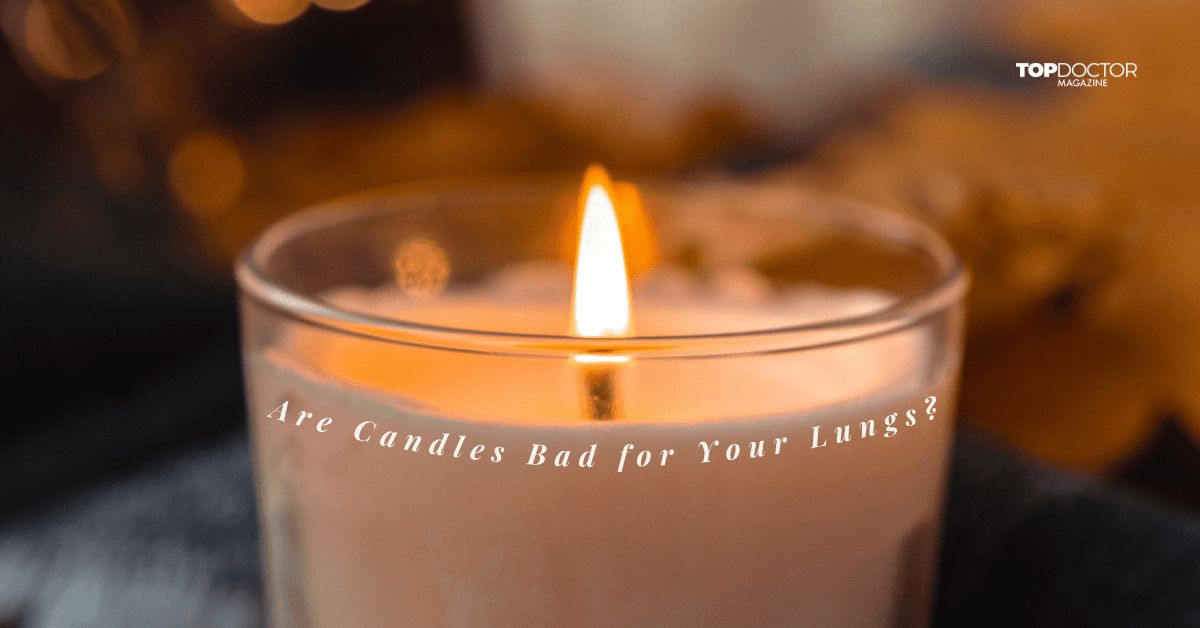Candles are commonly pictured as a relaxing or scenic decoration in any house. But what if you were told that they were actually toxic?
As concerning as this would be, toxicity is a fear often raised by many people, pointing to how candles burn and release toxic chemicals into the air. But how much truth is there in this concern? It turns out not much. Candles only release tiny amounts of dangerous chemicals, amounts far too small to affect your health in any way.
Are Candles Harmful to Your Health?
To understand whether or not candles are toxic, it’s essential to understand what candles are made of. Most modern candles are made of paraffin wax, a byproduct of the petroleum-making process, which might sound scary. A 2009 study argued that the paraffin in candles could be toxic and harm people who use them. However, this study has not been peer-reviewed, and its findings are disputed by another study that examined every major form of wax for 300 toxins but found none.
Are Candles Bad for Your Lungs?
Candles, like anything you light on fire, release smoke, and, like any kind of smoke, breathing in too much candle smoke will be bad for you and your lungs. But that doesn’t mean candles themselves are bad for your lungs. Instead, the danger that candles pose to your lungs is only really experienced at fairly extreme levels. So, unless you’re surrounded by candles in a very small room without ventilation, you’ll probably never notice any adverse effects from candle smoke on your lungs.
Can Candle Soot Harm You?
As they burn, candles release certain compounds and particles in minimal amounts, called soot, which can’t really harm a person. Candle soot, in particular, is released from the burning of paraffin, in turn releasing carbon particles into the air. However, the amount of carbon particles released from candles is comparable to a kitchen toaster. This means that while candles release certain particles, these particles are not in high enough concentrations to harm you.
Can Candles Cause Lung Cancer?
Some evidence indicates that candles could be a risk factor for some forms of cancer. A study from 2009 claimed that toluene and benzene are released by burning candles, both of which are known to cause cancer. Another study found that burning candles in poorly ventilated areas increased the risk of cancer. However, the results of these studies have been questioned as neither of them published the data they used to come to their conclusions.
Other studies have also contested the overall conclusion that candles can cause cancer. A 2014 study found that candles don’t emit enough chemicals to cause cancer in the amounts that we burn in regular use. This means that while candles do release some chemicals, the amount released from burning a couple of candles in your house won’t cause cancer. Naturally, burning an excessive number of candles would be entirely different and could be more dangerous. But you won’t accidentally create cancer risk by burning a few candles.
What Candles Are Toxic?
There is considerable buzz around paraffin wax candles and their potential toxicity. However, in a study of paraffin candles in rooms of various sizes, at no room size was the number of chemicals released considered dangerous. But paraffin wax is still made as a byproduct of gasoline production, and some concerns have been raised about it, which could make some uncomfortable. For such people, explore paraffin candle alternatives.
Can Scented Candles Harm Your Health?
But what about scented candles? We’ve talked about candles at large but are the emissions released by scented candles in particular harmful? Scented candles fall into a similar category as unscented candles. Burning scented candles can release other volatile compounds like formaldehyde, which can increase the risk of cancer in humans, but the amount that these candles release in everyday use has not been shown to be harmful to humans. So, whether you’re using scented or unscented candles, the odds are that while they have toxic elements, they aren’t dangerous for you.
Can Citronella Candles Harm Dogs?
But what about your dog? Can our citronella candles be harmful to your pets? Citronella is a commonly used natural method of insect and mosquito repellant. Often, it is burned from a candle, but it can also be used as a spray. For many, citronella is a natural replacement for harsher synthetic forms of chemical insect repellent.
However, while natural, citronella may not be the best thing to burn around your pets, especially dogs. For dogs, citronella can be toxic if eaten and will produce common symptoms of poisoning if done so, such as vomiting, convulsions and shock. But even without eating it, your dog can still be harmed if they inhale the smoke from citronella candles. If you’re going to rely on citronella, use it in spaces where your dog is unlikely to be exposed to it.
Which Candles Are Safe for Your Health?
We’ve seen that many forms of candles can release dangerous chemicals and compounds for our health. Even if these amounts aren’t enough to harm us, they may cause alarm for us. If you’re looking for a safer alternative, consider using natural-wax paraffin candles.
For example, you could use candles made of waxes like beeswax, soy wax, coconut wax and palm wax, to name a few. These waxes are naturally occurring and aren’t the result of synthetic processes like the ones that create paraffin from gasoline.
Additionally, these waxes have been shown to produce fewer emissions. According to a study, palm-based wax releases half as much soot as paraffin waxes. They also found that natural candles, in general, release fewer emissions than paraffin wax.
Small Emissions and Little Concern
We’ve looked at a lot of candles and a lot of concerns. When examining the body of research surrounding candle emissions, it’s easy to get confused by the competing studies and conclusions. But when you boil all the information down, perhaps it isn’t that confusing after all!
The bottom line is that all candles, either made of natural or synthetic wax, release chemicals into the air as they burn. The question lies in whether the amount of chemicals released is or could be dangerous to your health. The answer is that unless you go out of your way to use candles unsafely (i.e., using lots of candles in a small space without ventilation), you will probably never notice any health effects. Much like anything else, exposure to too much candle soot can be harmful, but the likelihood of this happening is minimal.
If you are worried about these emissions or the usage of synthetic products, many natural alternatives produce fewer emissions. The question of what candle to use ultimately comes down to your comfort, not what is safe. Any candle you use will be fine, but if you find yourself more comfortable using natural wax, then you should; if you don’t mind synthetic wax, that’s fine, too, because, at the end of the day, candles aren’t bad for your lungs.






0 Comments